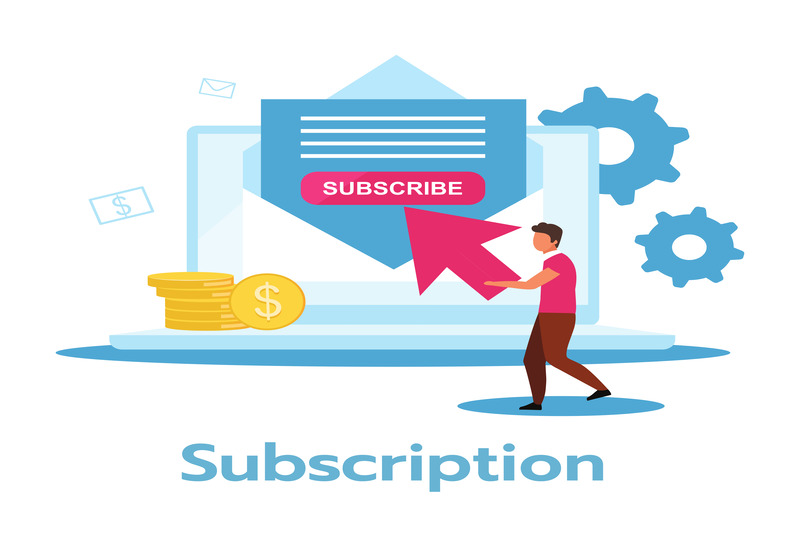To weather the massive disruption of the pandemic, restaurant businesses worldwide have embraced the subscription economy and adopted recurring billing strategies. Thanks to these innovative business models, restaurants retained a steady revenue even during the lean months. Click here to explore the benefits of adopting SaaS subscription management software (https://www.togai.com/solutions/pricing-model/subscription-management/) for your business.
Togai, (https://www.togai.com/), the leading billing and monetization platform, explains how subscription models have benefitted the food and beverage section of the hospitality sector.
Subscription Models: The New Pricing Approach for Restaurants
The restaurant business might be the latest to join the subscription model trend. It should not come as a surprise because there are several reasons why this industry vertical is jumping on the subscription bandwagon.
While subscription models are a great option to incentivize customers, they are also mutually beneficial for the business. Restaurants use subscription management software to offer alluring advantages and tailored customer experiences. They also help tap into the full potential of customer loyalty, resulting in increased engagement, heightened satisfaction, and overall success.
How Does the Restaurant Business Benefit from Subscription Models?
The food and beverage vertical includes:
- Regular restaurants
- Catering companies
- Five-start restaurants
- Pubs and bars
- Fast food establishments
- Cafes
Typically, restaurant operations do not end with food preparation. The business includes transportation and service of food to customers. By implementing subscription models, restaurants offer exclusive products and services through recurring fees, customer conveniences, and benefits.
These subscription program models offer more than just traditional discounts. They:
- Create an emotional and exclusive draw for customers.
- Foster a sense of value and appreciation.
- Allows you to come in savings with added conveniences.
- Strengthens customer loyalty.
- Instil eagerness in customers to join the program.
- Offer personalized dining experiences for customers.
- Create a better connection with customers, encouraging them to invest more in the program.
- Enable better market segmentation.
- Enable easy revenue, sales, and cost prediction.
- Generate a reliable revenue stream for the business.
The success of subscription models in the restaurant business is best explained with use cases, which we discuss in the forthcoming segment.

Examples of Successful Implementation of Subscription in Restaurants
Restaurant brands worldwide have successfully experimented with subscription models, offering meal kits and exclusive dining subscriptions.
- Restaurants like the Olive Garden and RaceTrac have witnessed a significant increase in customer spending and loyalty.
- Panera is the leading American fast-food and cafe-styled chain of restaurants. In 2020, the company launched its monthly coffee subscription service for $8.99. The subscription was packed with amazing benefits for coffee-loving customers:
- Iced coffee
- Hot drip coffee
- Hot tea every two hours
- Unlimited refills for customers in the cafe
This cleverly crafted subscription model was a massive hit amongst customers, and Panera launched its second subscription model, tastefully titled the “Unlimited Sip Club.” Customers paid $10.99 per month for a more extensive variety of beverages.
El Lopo bar in San Francisco is another success story with subscription-based models. Members of its Take-Care-Of-Me club are rewarded a hundred dollars in dining credits for 89 per month and a $200 dollar credit for a $175 monthly payment. Upon each visit, guests are served their favorite dishes and given the option to gift a complimentary drink to anyone in the bar.
US-based Chinese bistro P.F. Chang launched a subscription plan for $6.99 in September 2023. The plan offers its members free delivery and other benefits.
How Are Customers Responding to Subscription Services?
Customers’ positive response to subscription programs clearly indicates that loyalty programs are highly effective in driving customer engagement and spending.
According to a survey conducted by C+R Research, customers spend more than 2.5 times what they initially expected. This spending mindset demonstrates the value customers place on the attractive benefits, convenience, and personalized experiences offered by subscription programs.
A good 86 percent of buyers are willing to invest more in enhanced experiences, which clearly indicates their appreciation for the exclusivity of subscription models. This positive feedback further emphasizes the effectiveness of subscription programs in strengthening customer loyalty and making guests feel valued and appreciated.
However, the real success of a subscription model depends on how well it is implemented. To ensure they gain the most from this model, restaurants can:
Ensure a clear and concise strategy to communicate the benefits to customers.
Adopt a reliable subscription management software.
Concluding Points
Restaurants can enhance their customer experience by leveraging the power of subscription programs. By offering exclusive perks and rewards to loyal customers, restaurants can create a sense of appreciation and trust that fosters long-lasting relationships. Subscription programs can give customers regular access to their favorite dishes, creating a seamless and convenient experience. By doing so, restaurants can differentiate themselves in a competitive landscape and provide a comprehensive and immersive experience that keeps customers returning for more.

